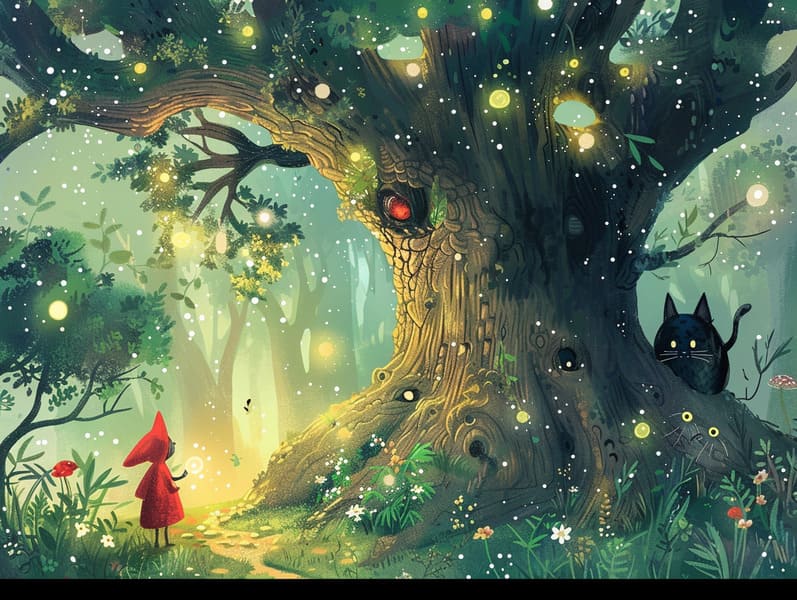The Journey of Fairy Tales and Its Consistent Grandeur.

Legendary fairy tales have enduring presence. These narratives have been passed down from one generation to the next centuries before they were ever written down. They came from a variety of traditions, including American traditions. They were initially shared among older generations, often carrying themes and messages relevant to the societal norms and beliefs of the time.
The Brothers Grimm, Jacob and Wilhelm Grimm, were among the first to compile many of these beloved narratives. Their volume, "Grimm's Story Collection," included narratives like "The True Bride," "Hansel and Grethel," and "Little Snow White," which have since become essentials in the world of traditional fairy tales. Similarly, Hans Christian Andersen's delightful narratives, such as "The Mermaid's Tale," and "The Story of the Ugly Duckling," have won hearts worldwide, guaranteeing their place in the pantheon of treasured fairy tales.
Though they are old, these stories remain as meaningful as ever, especially as kids' bedtime tales. These whimsical stories are now available in numerous formats, including gorgeously illustrated books, delightful animations, and web-based fairy tales.
Their continued relevance can be credited to several captivating elements:
Key Lessons: Classic fairy tales often share important moral lessons. Narratives like "The Boy Who Cried Wolf" teach the benefit of being truthful, while "The Race of the Tortoise and the Hare" emphasize the merits of steadfastness and unassuming nature. These stories offer little ones clear distinctions between good and bad, guiding their moral compass in a subtle yet impactful way.
Sympathy and Perception: Ancient fairy tales frequently include protagonists facing obstacles and hardships, urging audiences to identify with their struggles and champion their triumphs. For instance, "The Tale of Beauty and the Beast" demonstrates the merit of seeing beyond the surface to see the inner self of a character, nurturing compassion and appreciation.
Cultural Understanding: Many fairy tales are deeply embedded in the cultural contexts from which they sprang. Delving into these fairy tales can provide enlightening views into different backgrounds, encouraging a sense of global insight and knowledge.
Inventiveness and Fantasy: The enchanted elements in ancient fairy tales—magical spells—enliven children’s innovations. These narratives carry readers to enchanted realms, promoting fantasy ideas and a sense of awe that continues a lifetime.
Ancient fairy tales are not only captivating but also informative. They provide magical tools in cultivating various brain and heart skills in kids. When traditional fairy tales are read aloud, they boost speech development by teaching new linguistic elements and complicated sentence structures. This practice also nurtures hearing abilities and mindfulness, as little ones listen intently, expectant to see what happens next.
Furthermore, exploring the themes and characters of ancient fairy tales can enhance problem-solving abilities and problem-solving abilities. Little ones awesome site are shown to recognize patterns, make predictions, and realize cause and effect. These analyses also further kids verbalize their thoughts and feelings, nurturing their emotional intelligence.
In today’s technological age, the availability of internet fairy tales has made these fairy tales more obtainable than ever. Web platforms and online apps share broad selections of Grimm's fairy tales that can be perused or listened through anytime, anywhere. Fairy tales recited are particularly well-liked, featuring an engaging way for little ones to relish these delightful tales. Read-aloud books and narrated videos guide characters and settings to life, often supplemented by charming music and songs that enrich the story adventure.
The unending appeal of timeless fairy tales lies in their ability to transform to present eras while continuing with their basic principles. Contemporary modernizations of these fairy tales often show more different figures and modern settings, making them meaningful to today’s audience. However, the key lessons of fortitude, humanity, and fair-mindedness remain unchanged, continuing to touch readers of all ages.
Fairy tales also offer a sense of comfort and closeness. They introduce a organized narrative with a transparent beginning, middle, and end, often finishing with the solving of conflicts and the triumph of good over evil. This consistency can be reassuring for kids, imparting a sense of dependability in an ever-changing world.
Old fairy tales continue to mesmerize and instruct new generations, maintaining their delight and significance in modern society. As bedtime stories for kids, they provide a perfect blend of charm and enlightenment, facilitating moral values, empathy, and creativity. The proliferation of internet fairy tales and the in demand status of fairy tales recited certify that these traditional fairy tales remain accessible to new generations.
By safeguarding and recounting these fairy tales, we continue to glorify the rich tapestry of fantasy and cultural heritage. Whether you are accessing a vividly illustrated book, perusing a web collection, or listening on an spoken story, the beauty of traditional fairy tales is always within reach. These fairy tales remind us of the everlasting strength of stories and its ability to hold us together across eras and regions.
No matter if you are accessing a colorful picture book, browsing a online collection, or hearing an sound book, the mystique of timeless fairy tales is always within reach.
These fairy tales teach us of the eternal strength of narratives and its ability to unify us across time and space, establishing a link that charms and informs alike.